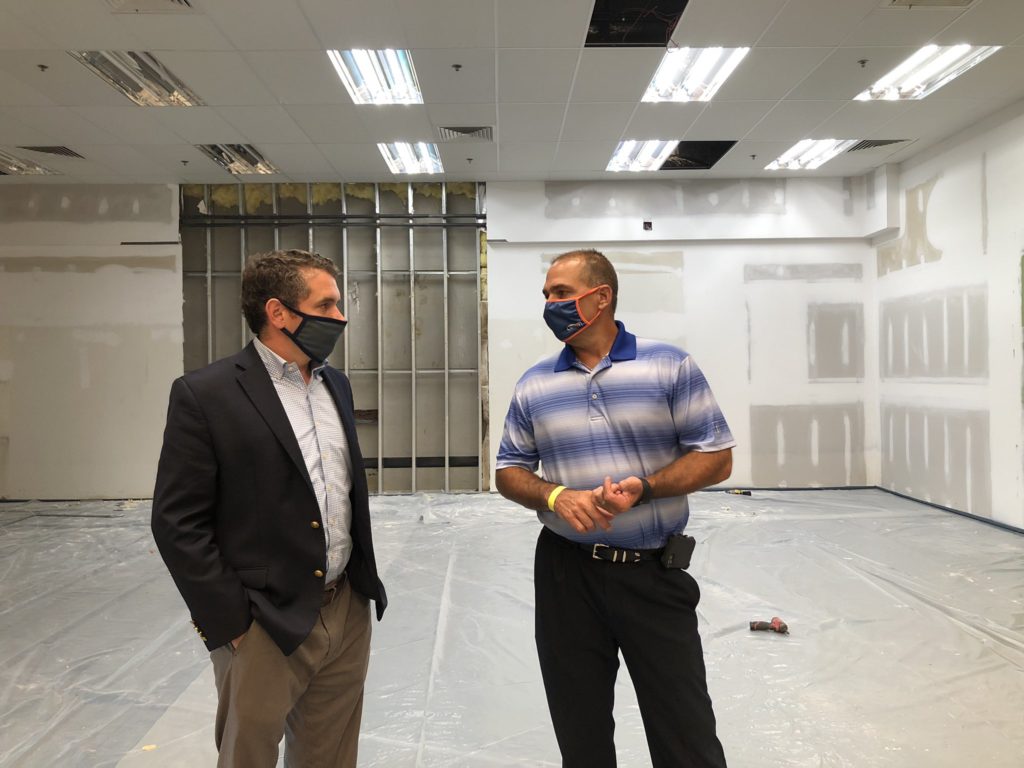Mark Poarch has been president of Caldwell Community College and Technical Institute (CCC&TI) since the spring of 2016. Poarch was executive vice president of the college as Caldwell County tried to climb out of the last great recession, so he had some hint of the challenges he might face as president of the college — and as a leader in a community that had lost so much of its textile and furniture industries.

Yet no leader could have foreseen the effects of a global pandemic that has threatened lives and sparked another steep economic decline.
As we entered CCC&TI last week to catch up with Poarch and his team, we had to sign off on a checklist confirming that we were healthy, and then have our temperatures checked. We also were required to wear masks throughout our time on campus.
We began our visit by heading down to see face-to-face instruction with the truck driving program, paramedic training, and basic law enforcement training.
The visit itself underscored the challenges facing Poarch and his leadership team as they consider the possibility of expanded face-to-face offerings this fall. He told us: “We’re still having lots of discussions about safety protocols, and what can we reasonably do on campus and logistically accomplish … and make sure that we’re keeping our students and our employees safe.”
“Those are some real challenges for us in trying to think that we have 25 buildings across four different pieces of property, so to make sure that if we try to do safety checks in every building, then that would mean that we would have to staff every building for 12 to 14 hours a day. And make sure that we have enough of the personal protective equipment in each building, thermometers, things of that nature to make sure that we could do that,” Poarch said. “Those are going to be logistical challenges that we are thinking through, and have to determine, you know, can we realistically do that to scale once we have approximately 4,000 curriculum students on campus and even more of our workforce development students on campus? I would say those are probably the biggest decision points.”
Listen to the full interview below.
Poarch and his team are working through decision points similar to those facing the leaders of the other 57 community colleges. The North Carolina Community College system office has been in close contact with the colleges as they monitor the governor’s announcements, guidance from the state Department of Health and Human Services, and local health metrics. The system office shared some data from a recent survey of each college that underscored the varied responses, including:
- 77% are providing more online only and hybrid classes (an additional 4% are providing more online; an additional 6% are providing more hybrid)
- 45% say they are scheduling more lab and skills-based classes early in the fall semester
- 94% have specific plans for sanitizing classrooms in addition to regular cleaning
- 100% are providing hand sanitizer stations
- 96% are installing plexiglass or other barriers
- 91% will provide masks to staff; 83% will provide masks to students
- 94% are spacing desks/seating six feet apart
- 94% are hosting smaller classes in larger rooms
- 94% are continuing to offer online alternatives to reduce in-person attendees
- 72% are assigning students to attend courses in shifts/cohorts to reduce in-person attendees
We would love to hear more from you regarding your own college’s plans and your perspective. Share your thoughts below.

